An often overlooked aspect of making is the art of achieving the perfect fit, property, setting, or aesthetic. Tuning is a common practice, but many in-the-moment adjustments are internalized and rarely documented, resulting in wasted materials, time, and effort. In many cases, only the ideal outcome is recorded, leaving the boundaries of the "Goldilocks Zone'' undefined and elusive. To address this, we examined different tuning practices across making communities and developed a tuning documentation tool that enables users to author standardized tuning experiments, log and evaluate different candidates over time, and synthesize insights about the tuning space. An applied tuning study with 10 participants and a two-week diary study with 5 participants reveal that cataloging tuning...
Projects
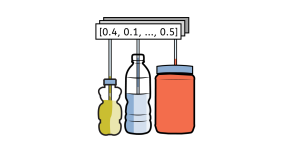
Viscous materials such as inks, gels, pastes, and slurries are ubiquitous across domains like food science, smart materials, digital fabrication, and the arts. However, their dynamic and unpredictable behavior—shifting over time and in response to environmental factors—poses challenges, often requiring costly equipment for accurate rheological analysis. This paper presents a low-cost, accessible sensing routine that retracts and extrudes viscous materials through an air tube, generating sensor vectors rich in rheological data. By embedding data from 26 rheologically diverse materials into a two-dimensional space, we create RheoMaps that allow for tracking material changes over time, distinguishing concentrations, and tuning rheological behaviors. These maps offer practical benefits for...
![[UG Research] ThermAssist](https://res.cloudinary.com/cearto/image/upload/c_fill,g_center,h_162,w_288/v1722019198/thermassist.png_ha.png)
The practice of thermoforming plastics relies on understanding temperature effects. While simulations can predict these effects with precise material and equipment parameters, they often fail to communicate experiential knowledge of how different materials and processes interact. Tactile feedback and visual cues are central to determining whether a material is malleable, a skill that simulations cannot replicate. Our work explores the use of a heat-sensitive spray-on smart material made from Polydiacetylene (PDA) to improve heat perception. This sensor exhibits reversible colorimetric changes in response to temperature variations from 100ºC to 200ºC, acting as a visual cue perceivable by humans. This study evaluates PDAs' sensitivity, accuracy, and practicality in real-time temperature...

Interviewing is pivotal in design thinking for understanding user needs. This study evaluates the use of AI-simulated virtual users in a laddering interview training workshop, where participants practiced skills with both human peers and a virtual user via the Wizard of Oz method, incorporating voice/video calls and text messaging. Analysis of 40 interview transcripts identified themes of improved exploratory conversation, rapport building, and reduced anxiety. Virtual users enhanced participant confidence and lowered cognitive load, leading to better performance. These findings suggest that integrating chatbots and virtual agents into educational frameworks could significantly enhance learner engagement and skill development across various interactive domains. Future research should...

Within various creative domains, communities of practice (CoPs) are instrumental in fostering knowledge creation and innovation. Although each community disseminates knowledge through resources like online video tutorials, this content is often hidden behind different contexts and semantics that limits practitioners’ ability to learn, borrow, and adapt knowledge from each other. To trace how knowledge disseminates across CoPs, we analyzed video transcripts across 25 communities and characterized them using Term Frequency Proportional Document Frequency (TF*PDF) to extracted materials, tools, and techniques concepts. Using a cluster heatmap visualization, we reveal material and material parallels as boundaries for umbrella CoPs, techniques as strong predictors of kindred CoPs,...

Communities of practice (CoPs) play a crucial role in cross-pollination and learning within various skill-based and craft domains. These communities often share common materials, concepts, and techniques across related practices. However, due to their insular nature, exchanging knowledge between CoPs has been challenging, leading to fragmented knowledge marked by differing vocabularies and contexts. To address this issue, we introduce Anther, a system designed to highlight shared concepts and semantic overlap between distinct CoPs. Anther projects concepts onto a 2-dimensional space, providing users with comprehensive, contextual, and conceptual views. We conducted a user study, demonstrating Anther's effectiveness in aggregating and disseminating community-based knowledge, bridging...
![[Graduate Consortium] Experiential Tutorials](https://res.cloudinary.com/cearto/image/upload/c_fill,g_center,h_162,w_288/v1718129790/Screen_Shot_2024-06-11_at_1.15.51_PM.png_ha.png)
Tutorials serve as a fundamental mechanism for disseminating knowledge within creative practices. Yet, tutorials struggle to convey tacit knowledge, a type of knowledge that practitioners internalize over time and experience. The subconscious nature of tacit knowledge often causes experienced practitioners to inadvertently omit fundamental actions in their instructions, which poses significant challenges for novices attempting to grasp the basics. However, no two novices are alike, making it challenging and burdensome for the tutorial author to align their tutorials with the audiences’ expertise. My doctoral research aims to create a more bespoke learning experience where tutorials are adapted to learners’ experiences without burdening the tutorial author. My contributions towards this...
![[UG Symposium] Sentura](https://res.cloudinary.com/cearto/image/upload/c_fill,g_center,h_162,w_288/v1719559876/Screenshot_2024-06-28_at_2.30.10_AM.png_ha.png)
Silicone has long been an influential material in haptic design due to its durability, flexibility, and versatility. However, its flat and smooth surface restricts potential applications. Using microtextures, we can improve on earlier designs by exploiting microtextured silicone's sensory perception and influence on users' emotions and feelings. In this paper, we explore the applications and benefits of microtextures in haptic design. We conduct a between-subjects psychophysics experiment to characterize the sensory perception of each texture using an adapted form of the Geneva Emotion Wheel. We also report the results of a card sort elicitation task to better understand how textures can improve and influence user actions for tactile user interface applications. Finally, we analyze the...
![[UG Symposium] Trace to Touch](https://res.cloudinary.com/cearto/image/upload/c_fill,g_center,h_162,w_288/v1719560057/Screenshot_2024-06-28_at_2.33.11_AM.png_ha.png)
Capacitive touch relies on electrodes to detect and interpret touch gestures. These electrodes are conventionally designed as rigid, grid-like structures, optimized for manufacturing efficiency. However, the advent of diverse conductive materials opens new avenues for enhancing the way electrodes are designed. In this paper, we develop a textile-silicone sensor composite using embedded conductive yarn as a capacitive touch electrode. By deviating from the grid pattern, we explore how alternative patterns can inspire novel, playful, and expressive gestures. We describe our design process for conceptualizing gestures from electrode design principles and iteratively test gesture detection using an off-the-shelf CNN model. Our approach in developing a textile-silicone sensor with unique...
![[Workshop] Advancing Creative Physical Computing Education](https://res.cloudinary.com/cearto/image/upload/c_fill,g_center,h_162,w_288/v1719561163/Screenshot_2024-06-28_at_2.52.02_AM.png_ha.png)
Physical computing is a materially rich practice that connects across skills in STEM, design, arts, and creativity. It also offers learners a means of making personally meaningful, computational artifacts that support creative development, resonate with personal identities, and access a history of craft and culture.Yet, physical computing instruction remains a complex instructional practice that requires navigating computation and reasoning, engineering and mechanisms, and creativity and problem-solving between physical and virtual spaces. Spurred by the pandemic, the shift to remote instruction fostered a wave of creativity in physical computing instruction and new lines of inquiry around access and inclusion, resilient learning, and the creativity, craft, and culture found in...

In recent years, online tutorials on video sharing platforms like TikTok and YouTube have become a prominent resource for DIY and makerspace learning, especially in offering valuable insight on the tools, materials, and techniques used. However, existing platforms often lack the comprehensive tools needed to navigate and connect knowledge across different DIY domains, creating a barrier for newcomers who must start from scratch when learning new skills. This result is hours spent watching video tutorials, mostly consisting of redundant information in hopes of finding answers to specific questions. The problem is compounded when operating in interdisciplinary practices because maker communities can be isolated in discrete “filter-bubbles” by search-engine algorithms which partition and...
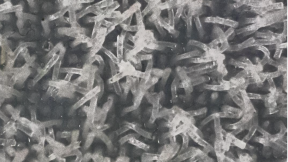
Microtextured surfaces are a versatile tool for the scientific and makerspace communities alike. By utilizing this micro-surface topography, one can influence cell growth and behavior, mimic biological surfaces on inorganic material, or even create microfluidic systems for micro-technology and behavior studies. However, established microtextured fabrication methods are inaccessible due to the high-powered machinery that is required. Castura is a set of microtexture fabrication techniques that leverage makerspace resources, such as laser cutters and engravers, and commonly available materials to produce reliable, low cost, and high quality microtextures that can be applied as needed.

Working with clay in makerspaces is an exciting new frontier, especially for supporting the aesthetic and functional forms found within ceramics. Despite advancements in clay 3D printing, the adoption of clay-based practices within makerspaces remains problematic. In this poster, we introduce a novel computational slip casting technique using peristaltic pumps and describe our method for developing the technique for adapting craft practices. We describe the challenges in navigating slip composition, adjusting for pump pulsation, facilitating slip dispensation and drainage. We demonstrate a set of computational routines for controlling the thickness of shell geometries. Our work adds to efforts to understand relationships between traditional skills and digital fabrication and discusses...

Incorporating sensor-based AI interactions in evolving makerspaces presents challenges, including the need for AI models to adapt to model degradation, data shifts, target changes, and environmental variations. Traditional user interfaces like desktops and GUIs can constrain the natural movement and actions in creative spaces, hindering the realization of a smart makerspace. To achieve this vision, it's crucial to explore how human-AI interactions can be seamlessly integrated into dynamic physical creative environments. In this work, we emphasize the use of spatial analyses to facilitate natural, intuitive, and collaborative interactions. Specifically, in the context of glassblowing, we employ a proxemics-based approach. By studying a glassblower's movements and activity in ...

The ecology of thermoplastic materials is rapidly evolving, enabling an exciting landscape of functional, aesthetic, and interactive forms. Despite their utility in fused filament fabrication (FFF), an even larger and untapped design space exists for thermoplastics. In this work, we introduce a design method that leverages similarities with a more mature medium (glass) to guide a material-centered exploration of a new medium (thermoplastics). Through a collaboration between domain experts in thermoplastics and glass, we synthesized an ontology of kilnforming techniques and developed an annotated portfolio of thermoplastic kilnforms that capture generative design directions for altering the phenomenological qualities of plastic, prototyping metamaterials, and composite forms, and...

Although a picture, GIF, or tutorial video is "worth a thousand words", every viewer has a unique perspective of which words they ‘see.’ Packed with rich meaning, these words, or descriptions, are often used to describe the ambiguity of working with materials, artifacts, and processes in creative practices. Our work reframes the traditional crowdsourced description tasks to leverage crowdworker diversity in generating a corpus of tacit descriptions. These descriptions are synthesized into a typology and describe how users communicate ambiguity and tacit knowledge embedded in unfamiliar material properties and familiar handed motions. We propose three design concepts that demonstrate how tacit descriptions could enhance the interpretation of tutorial artifacts - Tacit Layer, or...

Entering a cognitive state of flow is a natural response of the mind that allows people to fully concentrate and cope with tedious, and often repetitive tasks. Understanding how to trigger or sustain flow remains limited by retrospective surveys, presenting a need to better document flow. Through a validation study, we first establish braidmaking as a flow-inducing task. We then study how braidmaking can be used to unpack the experience of flow on a moment-by-moment basis. Using an instrumented Kumihimo braidmaking tool and off-the-shelf biosignal wristbands, we record the experiences of 24 users engaged in 3 different braidmaking tasks. Feature vectors motivated from flow literature were extracted from activity data (IMU, EMG, EDA, heart rate, skin temperature, braiding telemetry) and...

The ability to visually discern shape, form, and value is fundamental to observational drawing. However, developing this skill requires a drawer to perceive a “raw” version of the scene being drawn, often referred to as regaining the innocence of the eye. This work investigates how interactive projected light cues can be used to alter the perception of drawing objects and understand how users might control their own perception. We introduce an augmented reality system capable of dynamically projecting interactive light cues onto objects within a live drawing studio. We present the design of three cues that address challenging percepts for novice drawers: gauging proportion, discerning shape, and shifting visual attention. In a formal user study with novice and intermediate drawers, we...
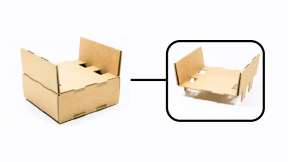
Packaging design has witnessed an impressive transformation with the rise of computer-aided design (CAD) and computer numerical control (CNC) machines. Like many CNC-reliant practices, there is an inherent cost to working through the CAD-CAM workflow, especially when fit and measurement are involved. Although quick to generate prototypes, the workflow is also quick to consume materials leading to unsustainable design practices. Here, we present a more sustainable packaging design process through Proto-Pack, a CAD toolkit for procedurally generating modular, reusable, and reconfigurable packaging building blocks that increase a prototype’s lifespan and utility. We show how Proto-Pack can be used to enable a sustainable workflow that reduces design footprints, supports thinking through...

Conductive thread is a common material in e-textile toolkits that allows practitioners to create connections between electronic components sewn on fabric. When powered, conductive threads are used as resistive heaters to activate thermochromic dyes or pigments on textiles to create interactive, aesthetic, and ambient textile displays. In this work, we introduce Embr, a creative framework for supporting hand-embroidered liquid crystal textile displays (LCTDs). This framework includes a characterization of conductive embroidery stitches, an expanded repertoire of thermal formgiving techniques, and a thread modeling tool used to simulate mechanical, thermal, and electrical behaviors of LCTDs. Through exemplar artifacts, we annotate a morphological design space of LCTDs and discuss the...

The material turn in HCI has placed a renewed focus on informing design from the relationships found in material-based interactions. While several ethnographic works provide insight into how practitioners converse with materials, it is less understood how these conversations transform into a skilled practitioner relationship with a material. We examine the material practice of glazing that gives ceramics its decorative and functional characteristics and involves fusing mixtures of silica, alumina, and flux onto a clay body through kiln firing. This practice evolves over decades developing from multiple trajectories including theoretical foundations, systematic experimentation, and happy accidents. This work describes virtual site visits with six expert ceramicists and documents how...

Compression-based haptic feedback has been used in wearables to issue notifications, provide therapeutic effects, and create immersive storytelling environments. Such worn devices are well studied on the wrists, arms, and head, however, many unconventional yet context-rich areas of the body remain underexplored. Current haptic prototyping techniques have large instrumentation costs, requiring the design of bespoke embedded devices that do not have the flexibility to be applied to other body sites. In this work, we introduce an open-source prototyping toolkit for designing, fabricating, and programming wearable compression-based interfaces, or compressables. Our approach uses a lost-PVA technique for making custom inflatable silicone bladders, an off-the-shelf pneumatics controller, and...

The shift towards distance learning brought forth by the pandemic has highlighted the shortcomings of teaching physical skills at a distance. With the emergence of new augmented and connected mediums, new opportunities arise for transferring physical skills that have resisted traditional documentation methods. However, there lacks a framework that allows tutorial authors to capitalize on a new medium's unique affordances rather than remediating existing tutorial conventions. Our work analyzes a body of tutorials rendered in various mediums for centering clay on a pottery wheel – a foundational skill that exemplifies the difficulties of physical skill transfer. Through the lens of McLuhan's "The Medium is the Message" we synthesize a taxonomy of medium conventions and themes derived from...

Silicone is a transformative design material found within a variety of emerging HCI practices including shape-changing interfaces, soft robotics, and wearables. However, workflows for designing and fabricating silicone forms require a time-intensive mold-cast-cure pipeline that limits the experiential knowledge that can be gained from working directly with silicone. In this work, we conduct a material-centric exploration of silicone and develop designerly workflows for creating inflatable silicone bladders. We present Siloseam, a creative framework that streamlines a bladder design and fabrication process, collects tacit knowledge involved in recovering from errors, and introduces new workflows that reuse existing molds. A set of exemplar artifacts demonstrates an expanded repertoire...
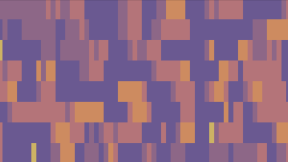
Tacit knowledge is a type of knowledge often existing in one's subconscious or embodied in muscle memory. Such knowledge is pervasive in creative practices yet remains difficult to observe or codify. To better understand tacit knowledge, we introduce a design method that leverages time-series data (interaction logs, physical sensor, and biosignal data) to isolate unique actions and behaviors between groups of users. This method is enacted in Eluent, a tool that distills hundreds of hours of dense activity data using an activity segmentation algorithm into a codebook – a set of distinct, characteristic sequences that comprise an activity. The results are made visually parsable in a representation we term process chromatograms that aid with 1) highlighting distinct periods of activity in...

Hybrid practices are emerging that integrate creative materials like paint, clay, and cloth with intangible immaterials like computation, electricity, and heat. This work aims to expand the design potential of immaterial elements by transforming them into manipulatable, observable and intuitive materials. We explore one such immaterial, electric heat, and develop a maker-friendly fabrication pipeline and crafting support tool that allows users to experientially compose resistive heaters that generate heat spatially and temporally. These heaters are then used to couple heat and thermoreactive materials in a class of artifacts we term Thermoreactive Composites (TrCs). In a formal user study, we observe how designing fabrication workflows along dimensions of composability and...

An exciting, expanding palette of hybrid materials is emerging that can be programmed to actuate by a range of external and internal stimuli. However, there exists a dichotomy between the physicality of the actuators and the intangible computational signal that is used to program them. For material practitioners, this lack of physical cues limits their ability to engage in a "conversation with materials" (CwM). This paper presents a creative workstation for supporting this epistemological style by bringing a stronger physicality to the computational signal and balance the conversation between physical and digital actors. The station utilizes a streaming architecture to distribute control across multiple devices and leverage the rich spatial cognition that a physical space affords....

Failure, whether it be “complete-and-utter” or “a minor set-back”, occurs in a variety of different creative practices, yet how it is perceived, handled, and recovered from is a lesser explored design space. Failing to address these perceptions of failure can have psychological repercussions, discourage users from continuing a practice, and form cultural stigma such as those associated with STEM fields. However, mediating practices to develop a culture of resiliency and perseverance is key to sustaining a (lifelong) practice and reshaping pedagogical strategies. In this work, we outline the design space of “guardians”, or elements of a creative practice that mitigate the psychological effects of failure. Through a contextual inquiry, we contribute an inventory of failure-mitigation...
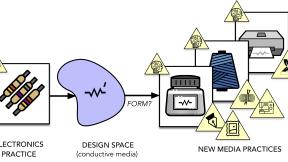
Practices are emerging which blend both physical and computational techniques and materials. This thesis contributes a framework for understanding how to compose these hybrid elements into rich, reflective new media practices that expand the aesthetic repertoire and facilitate the adoption, sharing, and teaching of hybrid techniques.

Recent digital fabrication tools have enabled new form-giving using a wide range of physical materials. However, light as a first class creative material has been largely ignored within the design of our electronic objects. Our work expands the illumination design space by treating light as a physical material. We introduce a digital design tool that simulates and visualizes physical light interactions with a variety of materials for creating custom luminaires. We further develop a computational design and fabrication process for creating custom secondary optics elements (SOEs), which provides additional handles for users to physically shape and redirect light to compose, fill, and evenly diffuse planar and volumetric geometries. Through a workshop study with novice electronic...

As interactive electronics become increasingly intimate and personal, the design of the circuitry is correspondingly developing a more playful and creative aesthetic. Circuit sketching and design is a multidimensional activity combining the arts, crafts, and engineering that broadens participation of electronic creation to include makers of diverse backgrounds. In order to support this design ecology, we present Ellustrate, a digital design tool that enables the functional and aesthetic design of electronic circuits with multiple conductive and dielectric materials. Ellustrate guides users through the fabrication and debugging process, easing the task of practical circuit creation while supporting designers’ aesthetic decisions throughout the circuit authoring workflow. In a formal user...

Advances in digital fabrication (DF) technologies are making it easier to produce high-fidelity replicas of digital designs. However, this push-to-print paradigm limits the creative opportunities that arise from “working through a material” which involves risk, uncertainty, and serendipitous discovery. We investigate how DF artifacts can function as static intermediary tools, which we term proxies, to support crafting practice. We focus on the wire-wrapping process, where physical wire is bent into complex shapes, and build DF fixtures to aid with construction and fabrication and explore how these proxies can provide users with different levels-of-assistance. In a user study, we evaluated how these proxies affect the making process and uncovered methodological distinctions between...

LiveObjects approaches expressive object design from the lens of art theory and creates a series of IoT data objects that utilize theatricality, or the perception of an object having presence, to provoke new interactions between objects, viewers, and space. This approach utilizes actuation, materials and everyday objects to express social data. We showcase how such objects can form unique expressive personalities, expose relational data, and perturb environments to form information spaces.
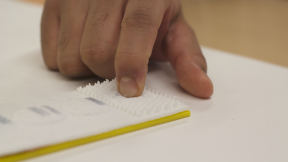
Digital fabrication has enabled massive creativity in hobbyist communities and professional product design. These emerging technologies excel at realizing an arbitrary shape or form; however these objects are often rigid and lack the feel desired by designers. We aim to enable physical haptic design in passive 3D printed objects. This paper identifies two core areas for extending physical design into digital fabrication: designing the external and internal haptic characteristics of an object. We present HapticPrint as a pair of design tools to easily modify the feel of a 3D model. Our external tool maps textures and UI elements onto arbitrary shapes, and our internal tool modifies the internal geometry of models for novel compliance and weight characteristics. We demonstrate the value...

MetaMorphe is a novel digital fabrication framework that uses a common web-programming metaphor to enable users to easily transform static 3D models into re-formed, re-made, and re-imagined customized personal artifacts.
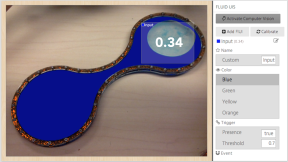
Fluid User Interfaces (Fl.UIs) are liquid-based touch surfaces that use computer-vision to detect and interpret a range of tactile user inputs. While Fl.UIs have less input resolution than digital touch screens, they provide an excellent low-cost solution for rapidly prototyping non-rectilinear screen designs as well as exploring novel surface interaction techniques. Fabricated on a laser cutter using low-cost materials, Fl.UIs use unique shape outlines to displace an internal colored liquid to regions-of-interest for a camera. This paper presents a set of software tools that help users rapidly design, fabricate and author interactions with Fl.UIs. The robust construction and an unpowered surface makes Fl.UIs well-suited for outdoor and public installations. The Fl.UIs prototyping tool...

